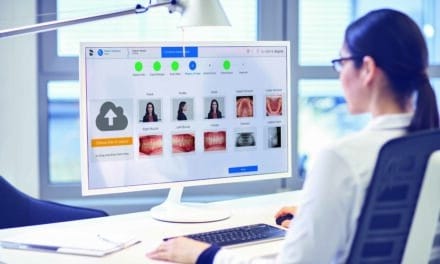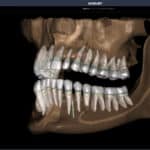Start-ups are turning to VC firms not just for funding, but for partnerships that test business models, fuel growth, and shape industry innovation.
By Greg Thompson
For orthodontic start-ups, bold ideas are only part of the equation. Bringing innovation to market requires significant capital, and venture capital has emerged as a critical resource. Beyond funding, VC firms often act as partners, pressure-testing business models and offering guidance. In orthodontics, their support has accelerated product development and commercial expansion, making venture capital a driving force behind the industry’s rapid growth and next wave of digital technologies.
KLOwen Orthodontics: Building with Equity
Texas-based KLOwen Orthodontics started in 2019 with ambitious goals to offer cutting-edge custom digital orthodontic solutions. Executives at the relatively young company had a lot of expertise, but like every start-up, they needed money.
When it comes to raising necessary funds, companies can boost capital through equity or debt. “It is far better to raise money in exchange for equity than for early-stage companies to take on unhealthy amounts of debt,” contends Ryan Elmore, CEO of KLOwen Orthodontics. “We’ve seen that [debt] sink otherwise promising companies.”
Late last year, KLOwen completed its Series B funding round, securing up to $25.5 million. This round was led by InLight Capital and joined by existing investors Jazz Venture Partners, Columbia Pacific Advisors, Springrock Ventures, and Ensemble Innovation Ventures.
From Series Funding to Market Expansion
Elmore explains that Series A/B funding is still predominantly in the “company building” and product development category. “We’ve been able to develop our own planning software,” he says, “as well as increase our custom bracket options, expand our manufacturing capabilities, and hire key strategic talent to grow the company.”
The new capital is also fueling commercial expansion at KLOwen Orthodontics, helping to accelerate its growth trajectory and deliver advanced digital orthodontic technologies to a broader market. For example, KLOwen recently expanded its portfolio by launching a custom metal self-ligating solution.
“We are thrilled to have the support of a syndicate that truly believes in our vision to transform orthodontics,” Elmore says. “This funding allows us to scale our operations, expand market reach, and continue to deliver exceptional value to orthodontists and their patients.”
Rethinking the VC Stereotype
Far from the image of “corporate raiders” merely out to make a buck, Elmore sees VCs as partners who are looking to responsibly grow the company. In the best-case scenario, VC partners gain board seats and can be valuable resources in the knowledge and connections they bring—along with the financial backing.
“The mere process of doing a series requires extensive preparation,” Elmore explains. “It helps you identify your strengths and weaknesses. People not familiar with VC have this image of money hungry types who they see on TV. That could not be further from the truth. VCs really pressure-test your business model and results prior to investing, and give very sound guidance on the company’s future.”
READ MORE: What do VC firms really think of the orthodontic industry?
A Growing Trend in Orthodontics
KLOwen is not alone. Orthodontic product/technology companies are increasingly receiving venture capital investment. In 2024, it’s estimated that venture capital investments in orthodontics added up to more than $100 million. Recipients of venture capital in recent years include LightForce, KLOwen, K Line Europe, and Grin.
Unlike private equity, VC tends to take on a bit more calculated risk, and with that risk there is an expected reward. “VC firms are looking for a high multiple return—maybe 10 times or more—in exchange for the higher risk of early-stage investing,” says Elmore. “Most companies are not cash-flow positive at this stage.”
uLab Systems: Innovation at Scale
It’s a recipe that has driven considerable technological innovation. In the case of Tennessee-based uLab Systems, multiple rounds of VC funding have led to a new manufacturing facility in Memphis and development of uDesign orthodontic software.
The most recent VC infusions for uLab were in mid 2021, specifically $54.5 million in an “oversubscribed” (more than planned) round. The spring of 2021 saw an additional $20 million raised from CareCapital.
“We developed the world’s thinnest high force retaining material called Reva, allowing for precision teeth movement and fewer side effects such as posterior open bite,” enthuses Charlie Wen, president, CTO, and founder of uLab Systems. “We developed our own indirect bonding technology which makes braces treatment easier. We built software for direct aligner printing to improve future aligner fabrication, and more.”
Toward a Paradigm Shift
It amounts to a lot of progress in a fairly short time with venture capital and private equity fueling continued change. Is there a paradigm shift on the horizon that could compare to clear aligners? Similar to the evolution of personal computers to mobile devices, Wen believes orthodontic device design and fabrication will follow a similar trend, with more doctors using software to plan treatments themselves.
“Doctors will use clinical chair-side fabrication equipment rather than relying on remote, mostly offshore fabrication services,” he says. “Chairside design and fabrication have many advantages. You are giving instructions to yourself and executing exactly what’s in your mind, solving many miscommunication issues… We are still in the infant stage of this paradigm shift, and venture capital certainly can help to speed up the process.”
Biolux Technology: Funding for Light-Based Therapy
At Biolux Technology USA LLC, venture capital funding accelerated development and validation of the company’s OrthoPulse device, helping to make it accessible to patients. “Venture capital has been instrumental in advancing our near-infrared light therapy platform—technology that’s scientifically backed and poised to redefine how dental professionals manage patient care,” says Michael Hendricks, chief business officer at Biolux. “It is effective and easy to integrate into everyday dental practice. The value proposition is simple and powerful; science-backed, non-invasive care that benefits every patient in the chair.”
In late 2024, Biolux Technology received a $4.5 million investment in its seed fund stage from European VC redalpine and Revere Partners. “We chose equity because as an early-stage startup it is difficult to access meaningful debt financing, and equity gives us the flexibility to focus on long-term growth,” explains Marcel Pordes, CEO at Biolux. “It allows us to invest in product development and market expansion while bringing on strategic partners who share our vision.” OP
Greg Thompson is a contributing writer for Orthodontic Products.
What Do VC Firms Really Think of the Industry?
By Ryan Elmore
A few years ago, when capital was freely flowing, it was fairly easy to secure venture capital (VC) funding at strong valuations. However, capital has recently tightened up and the bar to secure it is higher.
Most VC firms understand very little about the oral health space, much less orthodontics. VCs are looking at the total addressable market (TAM) and how well the company is positioned to gain share. From that perspective, the orthodontic space has a large TAM (several billion dollars).
The challenge is that there are only about 9,000 orthodontists in the United States, so it is a very small customer base. Also, orthodontists, in general, are reluctant to change their habits because orthodontics has been pretty profitable doing things the old way decade after decade. Think about how long it took Align Technology to become profitable and how much investment it took.
The next factor is the track record of successful exits, such as IPOs or acquisitions, in the category. Align Technology is the shining star that everyone else is trying to replicate. There have been some investments that give pause (Dentsply Sirona with Byte, inBrace, etc). It doesn’t mean it isn’t an attractive space to invest, but rather that there is definitely work to be done educating the investment community. OP
Ryan Elmore is the CEO Of KLOwen Orthodontics.
Photo:










